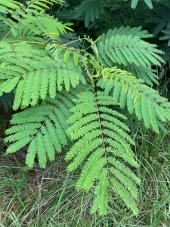Climate change is going to be a real problem for gardeners, especially those that love perennials! In your texas climate, things are changing quickly. I've dug up some facts while writing Growing Good Food
What’s changing:
Over the past century, the average annual temperature in this region rose by 1 to 2 degrees, and it’s likely to get worse. By 2050, temperatures will likely jump by another 3 to 5 degrees. One result will be a rise in the number of 100-plus-degree days: extremely hot conditions now last for about a week a year, but scientists expect that to quadruple by 2050. The increased risk of drought will be most pronounced in the southeastern horn of Texas.
Since the beginning of the century, the frequency of extreme storms has increased by about 40 percent. But unlike storms in the rest of the country, their intensity hasn’t changed all that much. In an interesting new pattern, it’s now more likely that long droughts will follow big flood events. In 2017, Hurricane Harvey hit Texas, bringing close to 50 inches of rain and relentless winds. More than 30,000 people were evacuated from their homes, and 88 people died. Only a few months after this disaster, nearly 40 percent of the state was experiencing drought, up from just 4 percent before the hurricane hit. Understanding the effects of this new superwet-to-superdry swing is becoming an important focus for climate experts. Some research suggests the region could become drier than it has ever been in the last 1,000 years.
What it means for growers:
Gardeners will have to rely on irrigation to help fruits and vegetables weather the long, hot summers. Since water supplies are already at risk due to aquifers being depleted faster than they can refill, it’s likely growers will be subject to tougher water restrictions. The hotter temperatures will also worsen pest and weed problems all over the region. Agriculture may have to relocate to cooler northern zones as summer heat stress and the lack of water threaten crop yields. At its worst, the intense heat could prevent crops from growing at all.







